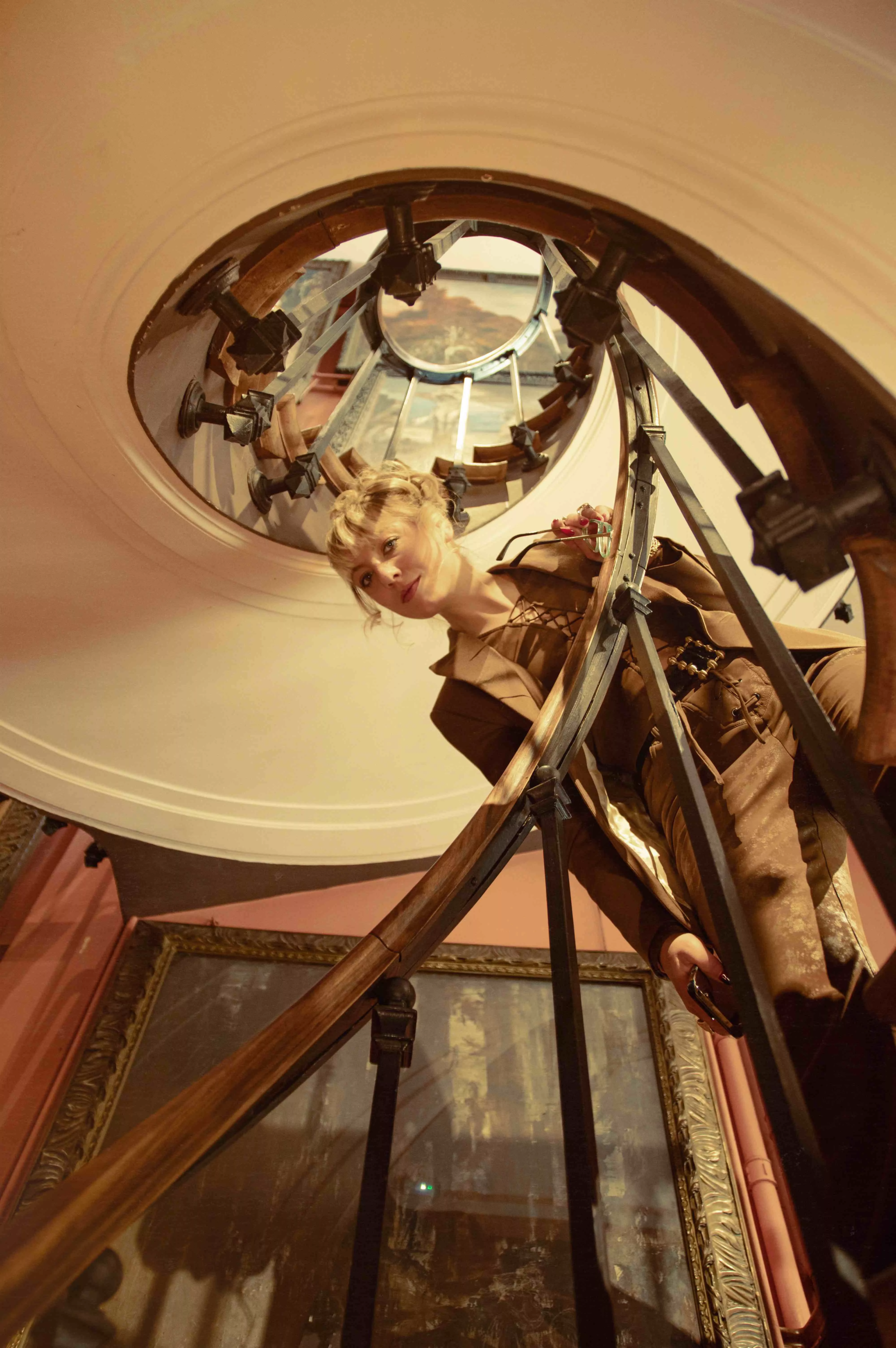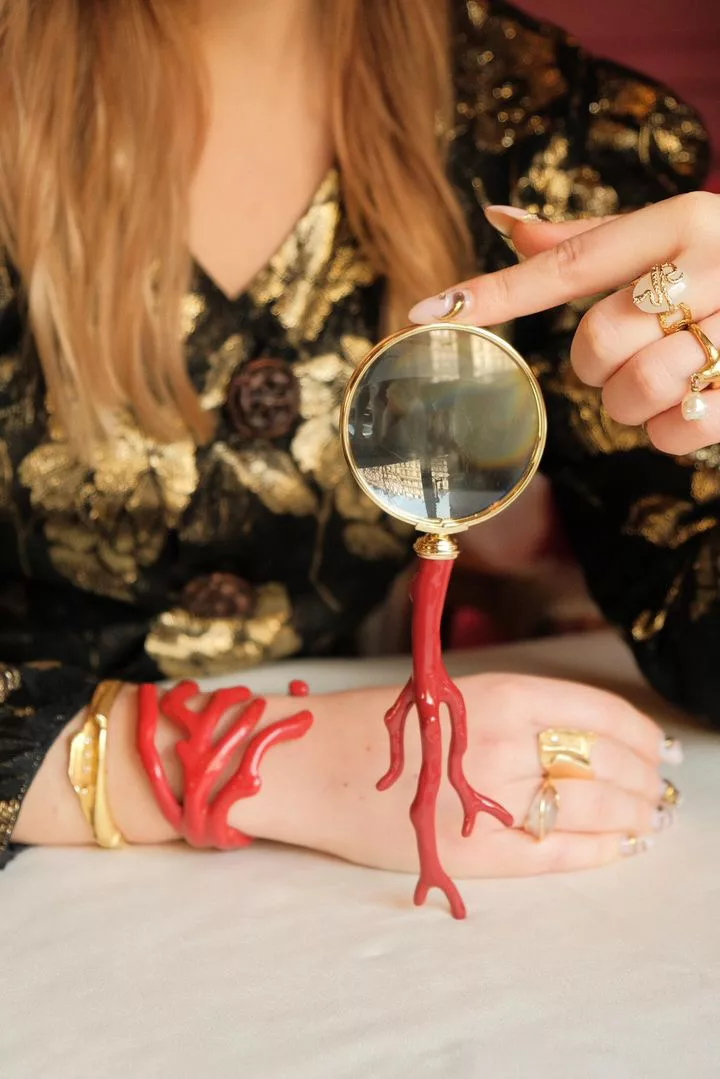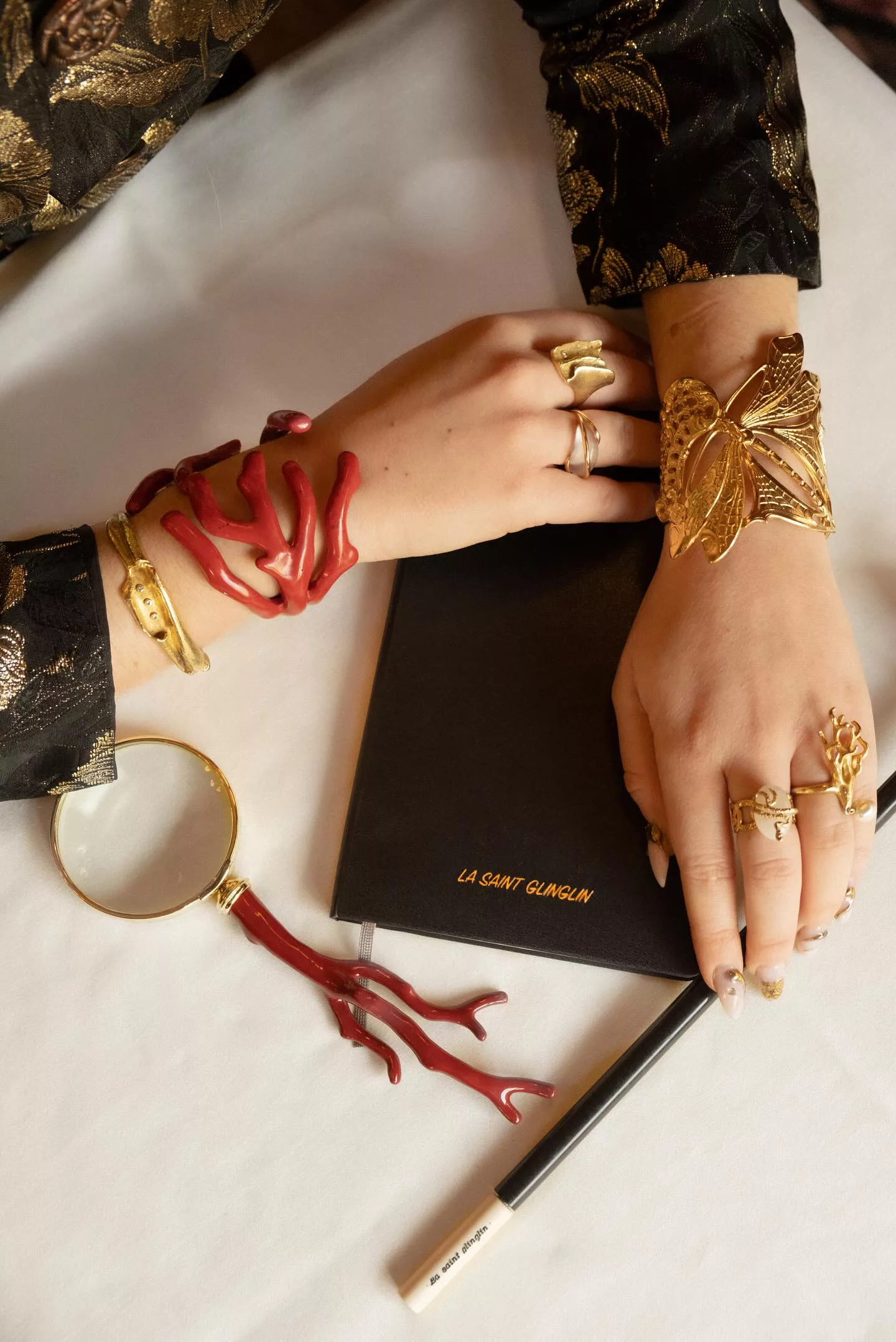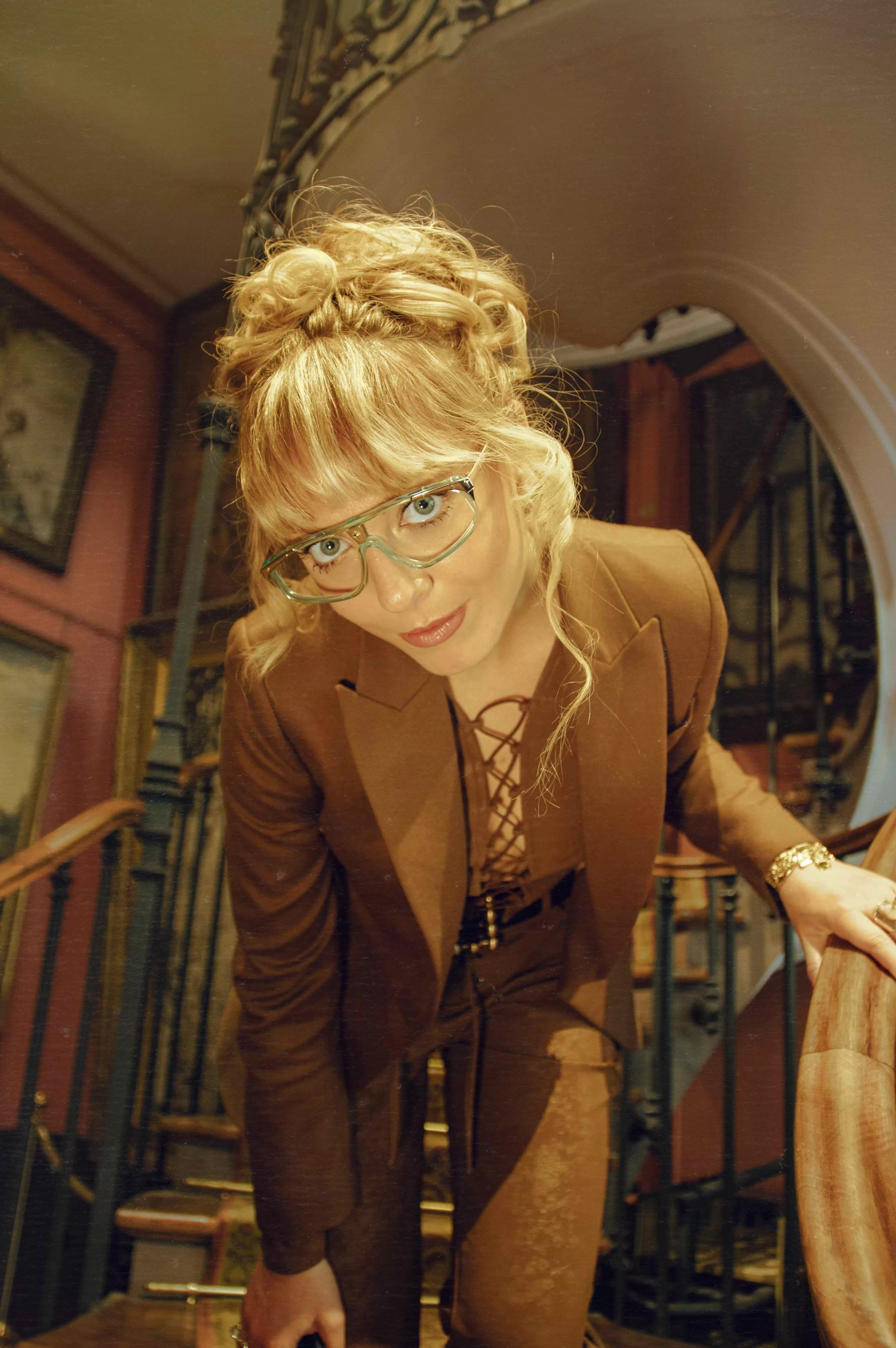Writer Saffron Swire takes us into the world of the young auctioneer, object-lover, and storyteller Chloë Collins and explains how she is changing the world of modern auctioneering.

“It’s like having a bit of the owner’s soul,” the auctioneer Chloë Collin declares from her modish Parisian apartment, a stone’s throw from Palais Royal-Musée du Louvre station. After waxing lyrical about the timeless antiques she has discovered over the years, she explains how searching for these rarities can place her in some peculiar situations. Just before our call, she spent hours sifting through eerie bric-a-brac only to discover sacrificial objects and tribal masks with tufts of animal hair. “The objects carried a chilling energy around them,” she confesses, “but it’s a story of a culture, and I am a storyteller.”
Collin, also known as ‘La Saint Glinglin,’ has recently been dubbed as “le enfant terrible” for her work in modernising a world that can be notoriously exclusive, elitist and androcentric. By contrast, Collin, 28, is media-savvy, voguish and motivated to shake up the auction world’s flaws until they are going, going, gone, establishing a viral presence on platforms like TikTok and Instagram to draw a new generation of art collectors to auctioneering.

Chloë Collin grew up in Rennes, the capital city of Brittany in northwestern France. The only girl in a family of four, her parents worked in medicine, and she had “no connection” to art or the art world. “When I was younger, I had so many ideas about what I wanted to be and what I wanted to create,” she explains, flashing her collection of vintage rings bedecked on her fingers—one of which is 150 years old. “One day, I wanted to work in fashion. The next, I wanted to be a journalist or an actress, but my grandmothers told me it would only ever happen on Saint Glinglin’s Day.” For the unbeknownst, ‘La Saint Glinglin’ is an old French expression that refers to a day that will never happen, akin to flying pigs.
Collin has managed to carve fact from fiction and is not only an auctioneer but, in some ways, the things she always longed to be: a fashionista, journalist and collector. After committing to the auctioneering path, she embarked on a decade-long path of laborious study to become a “commissaire-priseur,” or auctioneer. She studied a double undergraduate degree in classics and history of art before doing a master’s degree in art history and a law degree. Collin was then able to take the auctioneer exam, followed by two years of training at the Louvre school with internships at an auction house. Her career began at FauveParis, a young auction house in the Marais, before moving to Pierre Bergé and Associés auction house. She now works as an independent auctioneer in Paris.

“It’s very hard to be an auctioneer in France,” she says frankly. “It requires ten years of study, and then they only pick around 20 people from the year. While the study is free, it can be tough and selective, and it was only recently that they started balancing women with men.”
During her internship, Collin discovered her devout affection for people, their stories and the objects that immortalise the two. Her wide eyes dilate as she recounts a story of discovering the vintage treasures nestled in the wardrobe of an elderly woman. “I found this vintage Chanel dress she wore to a wedding in 1960, along with gloves and a hat,” she recalls. “I asked her when it was from, and she laughed and said that neither I nor my mother would have been born.” The woman showed Collin an old framed picture of her in the dress, and it was at that moment that Collin realised the power of objects and clothes in serving as a testimony of one’s life and that, if told correctly, can sell “just about anything.”
“Evaluating an object is like a form of medicine,” Collin describes. “It’s important to examine everything and the years of study it involves means I can see an object, give it a price, source the history and sell it.”
How does she decide what is worth hammering home for? “Of course, I don’t like everything, but I know what will be liked. I think to myself: what is the market desiring in 2024? Is it a true or false object? It’s not enough to show me a 19th-century table, it needs to be something I know collectors would want.”

While the collectors that come to Collin are typically well-versed in art auctioneering, she recognises how social media has played a part in democratising things. “I still go to art parties around Paris, and when I tell people I’m an auctioneer, they look perplexed and say, ‘Oh, like in the movies? You mean they still exist?’ At that point, I knew I had some hard work to do.”
She began putting objects on Instagram and TikTok, racking up thousands of views and likes. “Through putting objects on social media, they realise that the world is not as elitist as they might think, and they can do it offline instead of going to places like Depop or eBay,” she says. “The younger generation loves going to flea markets, but auctions are just flea markets that meet eBay. A big plus is that we are experts; we can guarantee it, certify it, and give it provenance. It’s like giving an object a passport.”
She continues: “Of course, it is important for the art market to put your Picassos and your Basquiats up for evaluation at auction, but you can also discover so many unique and affordable pieces at auction. For example, I discovered this beautiful 19th-century globe with little bronze feet the other day and got it for 100 euros. It could easily belong in a museum, but through auction, you have the ability to put it in your home.”
Does she have any tips for aspiring collectors? “If you have a crush on an object, pursue it,” she instructs. “It’s like love; you must chase that feeling. Also, try and meet the artist behind the work. That way, you can enter their world and develop a relationship. And if you find yourself at a flea market, don’t be afraid to ask questions: Who was the owner? What is the history? It’s important to be curious and to observe the object; you never know what story it could hold.”
Collin’s specialisation lies in urban art and graffiti. She has been fanatical about graffiti and street art since she was a teenager and often flings photography books, framed prints, and sketchbooks at auction.
“Many people shrug it off and think of it as vandalism, but it’s art for free,” she explains with great zeal before grabbing a book by American photojournalist Martha Cooper about NYC Graffiti from the 1980s to flick through.
“I was obsessed that it was for free, and it wasn’t in the museum. For me, the most beautiful movements in art are the ones that innovate. It’s not only about the art itself but the culture around it, the influence of the subway, sneakers, the hip-hop movement, and skateboard culture. If we compare Fututra 2000 (the American graffiti artist) to Jackson Pollock, it’s the same abstract expression. Graffiti is a form of expressionism outside the canvas and onto the streets.”
Collin takes pride in her own form of expression on her social media but is wary of being cast as the “TikTok” auctioneer. “I’m sure I can be bigger on social media, but I like the balance I have struck,” she declares. “I can open the door to my gallery and close it when I want. I understand social media can provide insight into a world people don’t know,” but she attests that “I don’t want to be ‘the social media auctioneer. My job is to be an auctioneer that tells a story.”
She continues on with the metaphor of doors and keys while soberly ruminating on her future. “I’ve started to think a lot about what makes me happy. Is it hammering? Is it social media? Is it collecting? And I’ve decided it’s a mix of all those things,” she concludes.
“We live in a tricky time, but art will always be the key. I like to think of myself as a type of fairy, and I can bring brightness into people’s lives through clothes, objects and stories. If I can do that, I know I will be happy.”
Words by Saffron Swire





